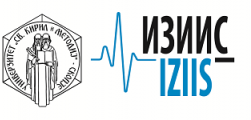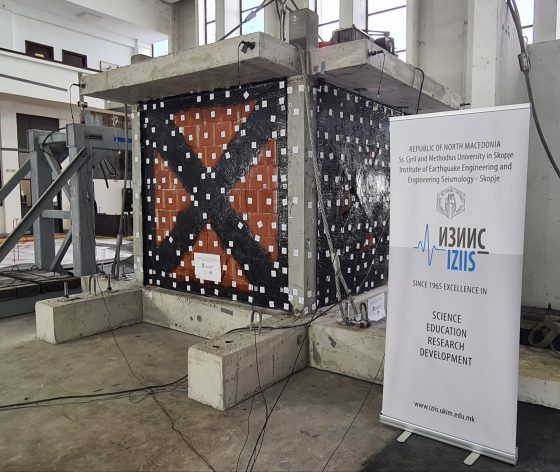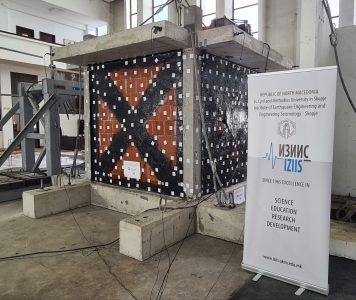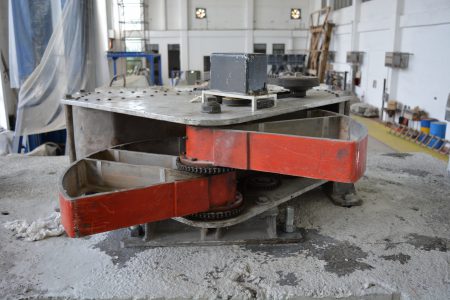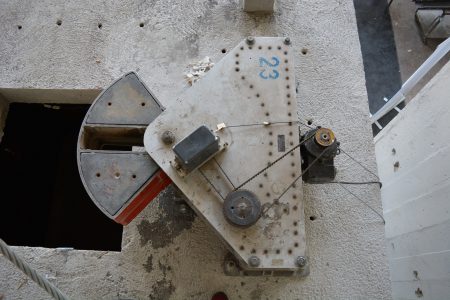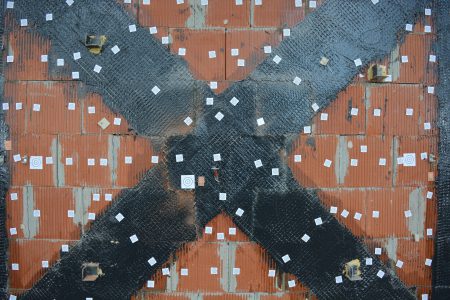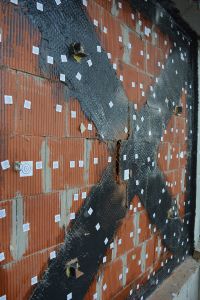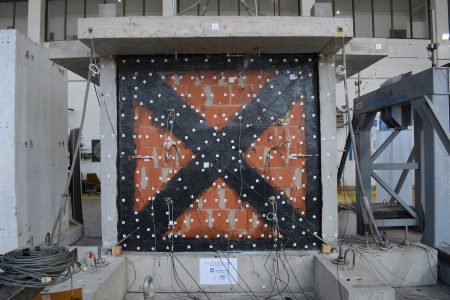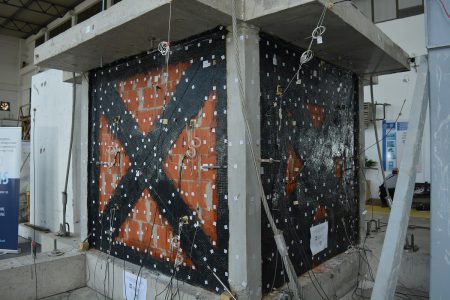After the successfully realized INMASPOL (INfills and MASonry Structures by Deformable POLyurethanes in Seismic Areas) project in the framework of SERA (Seismology and Earthquake Engineering Research Infrastructure Alliance for Europe) research project in 2019, the mutual collaboration between Cracow University of Technology – CUT and the Institute of Earthquake engineering and engineering seismology – IZIIS in Skopje went further on.
The purpose of the activities undertaken at the request of TUK, i.e., additional tests on the model from the INMASPOL project, was to continue assessing the efficiency of the innovative method for seismic protection of structures. This time, through tests on a full scale model of RC elements with masonry infill by means of the forced vibration method. By placing the model aside from the shake table, the risk was considerably reduced and a possibility for its testing and causing serious damage was created. With the last tests inclusive, the model was completely destroyed considering that all joints lost their bearing capacity and the structure behaved as a mechanism. Upon loss of bearing capacity of composite materials, the block bricks of the partition walls also suffered individual displacement irrespective of each other.
For the first time since the foundation of the Institute in 1965, due to the current global Covid 19 pandemic, the experimental activities in the laboratory were successfully performed by virtual presence of all stakeholders. Virtual presence was enabled through three high resolution adjustable cameras and a special communication link of Microsoft Office 365 Teams and Stream applications.
In the period to come, detailed analyses of the results obtained by the seismic shaking table tests and the tests by use of the forced vibration method will be carried out, hopefully resulting in further fruitful scientific cooperation.
